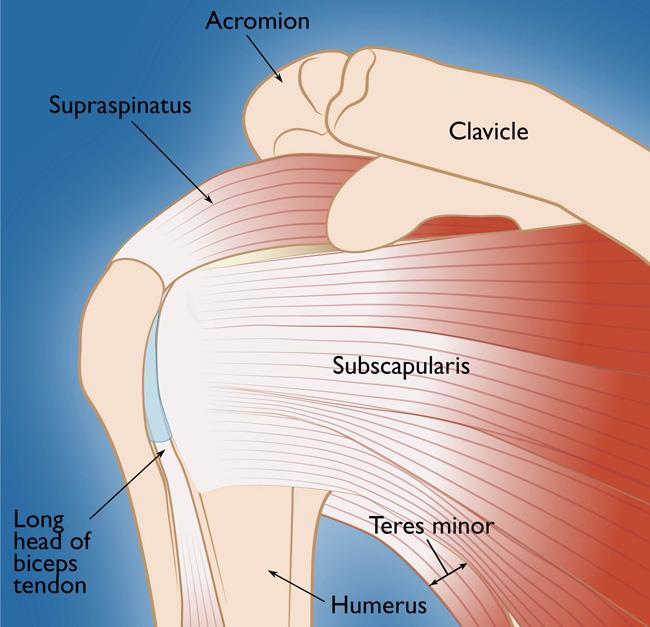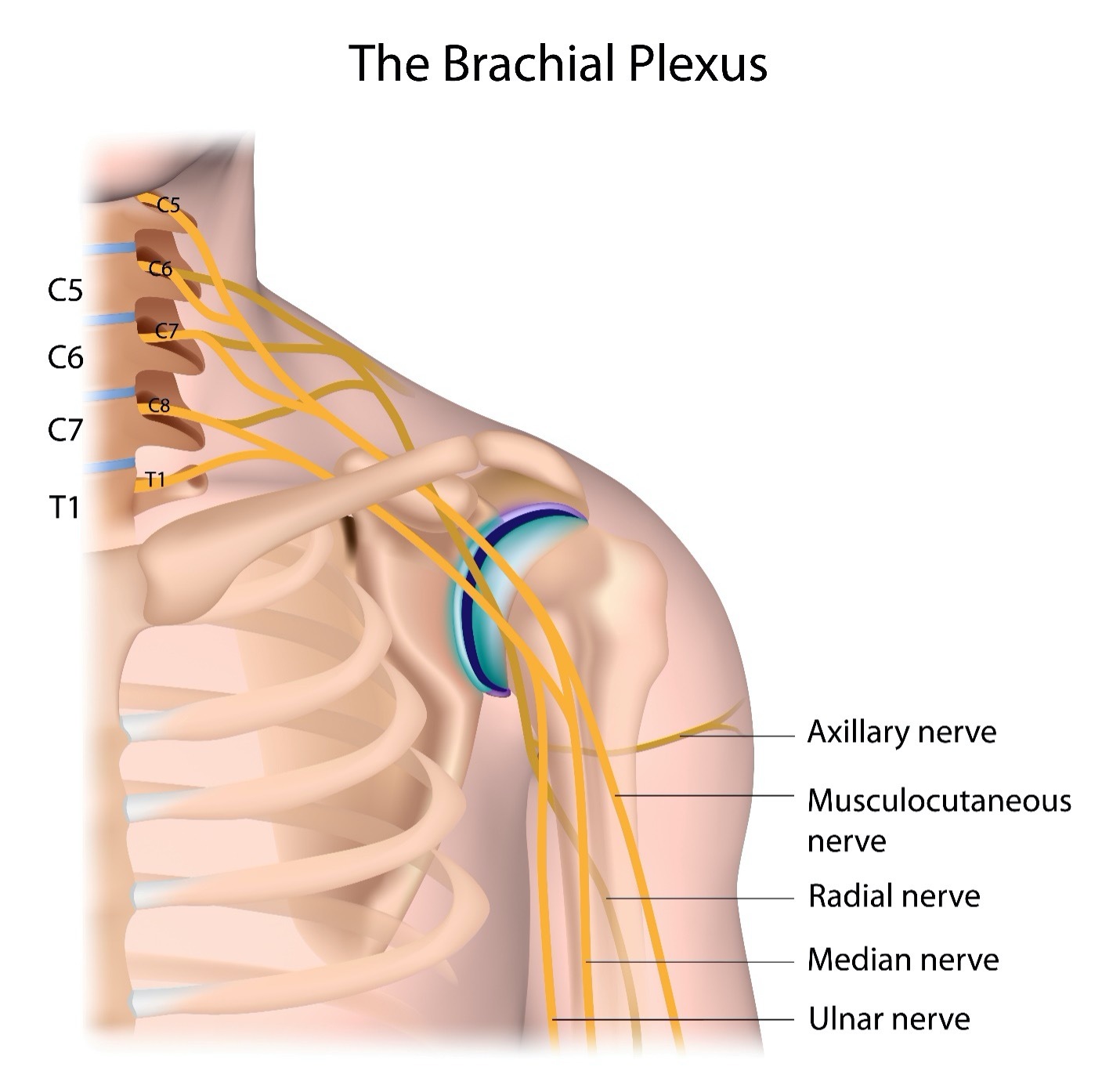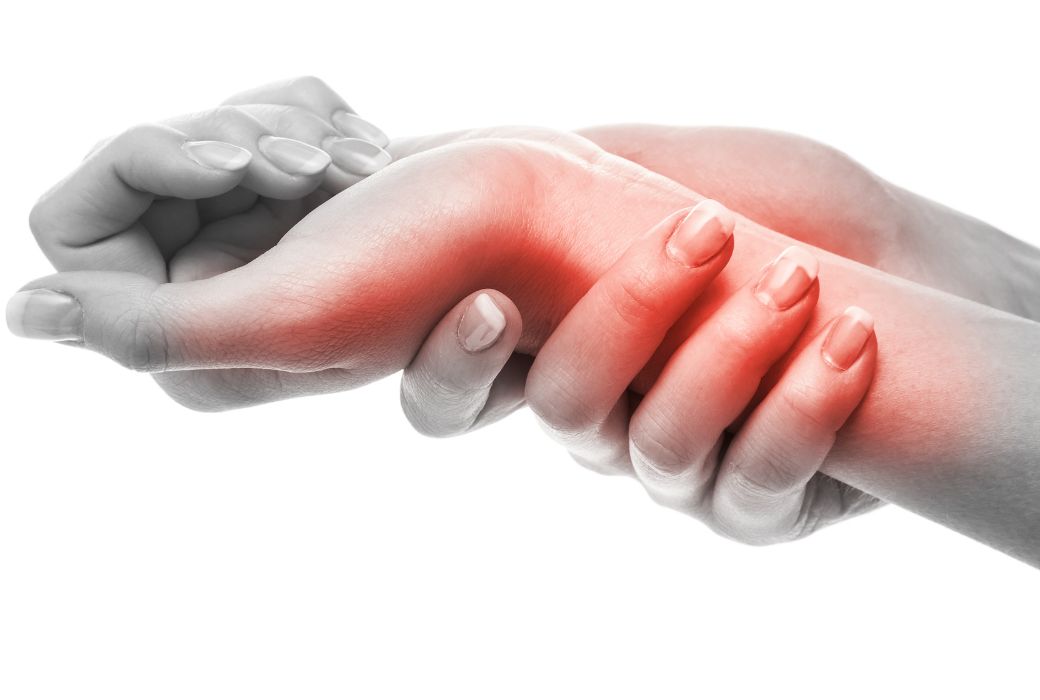When we consider pain, numbness, or impaired function of our hands, we assume we are suffering from a type of hand injury. However, not all symptoms are directly caused by your hand. Like many other body areas, we may feel pain as a compensatory reaction to an injury elsewhere. For example, you might suffer from a headache due to neck pain. The same may happen when we suffer a rotator cuff injury in our shoulder, leading to injury-like symptoms in our hands.
This blog will discuss the relationship between the rotator cuff and the hand, discovering why one may affect the other.
What is the rotator cuff and how is it injured?
We’ll first look at the rotator cuff; what it is and how it can become injured.
The rotator cuff is a group of muscles and tendons around the shoulder joint, specifically the shoulder blade (scapula) and humerus. Its role is to hold the shoulder joint in place, allowing for movement such as lifting and rotating your arm. Four main muscles make up the rotator cuff. These include:
- Supraspinatus: Allows you to rotate and lift your arm.
- Subscapularis: Allows you to hold your arm outstretched from your body.
- Infraspinatus: Assists in rotating your arm.
- Teres Minor: Also assists in turning and rotating your arm.
Due to the shoulder joint being such an important part of our everyday life, it is integral for the rotator cuff to remain intact. Unfortunately, however, the rotator cuff isn’t immune to injury, with the most common causes being injury via activity such as sport, or degeneration through overuse or age.
Injury to the rotator cuff, referring to tearing one or more of the four muscle tendons, most commonly occurs from falling onto an outstretched hand. Repetitive use of the rotator cuff can also cause degeneration of the muscles in sports that require lots of arm movement, for example, baseball, tennis, basketball, golf and swimming.
Common symptoms associated with rotator cuff tears include:
- Pain or tenderness: when reaching overhead, at rest, or radiating down the arm
- Arm and hand weakness
- Difficulty raising or rotating the arm
- Difficulty reaching behind your back
- Popping/cracking sensation
- Shoulder locking
- Shoulder weakness
How do our hands function?
Now we’ll look into the role our hands play, how they function and what they do.
Our hands are one of the most complex parts of our body, made up of an intricate formation of muscles, bones, tendons, ligaments and nerves. Each component works together to allow fine motor movements, such as writing with a pen or playing the guitar. What’s perhaps the most important for our hands is the nerve network, originating at the cervical spine, known as the brachial plexus. The brachial plexus sends nerve impulses through our shoulder, down our arm and into our hands. This is also similar to our muscles, many of which attach to the bones at our shoulder and connect down our arm and forearm, aiding in our hand movements.
The connection between the rotator cuff and hand function
Now that we have an understanding of both the rotator cuff and the hand, we can delve into how one may influence the other.
Studies have shown that many people suffering from a rotator cuff injury also experience some pain and tingling in the arm and hand connecting to the injured shoulder.
Upon injury to the rotator cuff, it is thought that inflammation inside the shoulder ‘capsule’ may contribute towards numbness/tingling radiating down the arm and into the hand. Dislocation of the shoulder joint due to instability has also been associated with injury to the brachial plexus, leading to nerve issues further down the arm and hand.
Another reason for pain and tingling comes from compensatory movements as a result of a shoulder injury. When we injure a part of our body, we often subconsciously alter our movements to avoid pain or instability. For example, if you were to injure your left ankle, you are likely to put more weight on your right ankle to avoid the pain.
Overcompensating your shoulder pain by putting more stress on your arm and hand may lead to the symptoms associated with a rotator cuff injury, particularly for your muscles and tendons.
Finally, injury to the rotator cuff may interfere with your proprioceptive feedback, meaning your body’s ability to understand and sense its position in space. Studies have shown that shoulder injury often results in a loss of joint position sense. This can, in turn, impact our hand’s ability to perform fine motor movements, adding to the list of associated symptoms of a rotator cuff tear.
Treatment and rehabilitation for a rotator cuff injury
Upon diagnosis of a rotator cuff injury, either via X-ray, ultrasound or magnetic resonance imaging (MRI), the level of injury can be determined. Diagnosis will show whether you have partially or fully torn one or more of the tendons at the rotator cuff, in turn establishing the course of treatment you should undertake.
For partially torn and less severe injuries, initial treatment will involve a period of rest, coupled with nonsteroidal anti-inflammatory drugs (NSAIDs). Strengthening and stretching exercises may also be prescribed by your doctor to help redevelop your shoulder’s strength and range of motion. Scapular stabilisation, shoulder mobility exercises and proprioceptive training are all methods of rehabilitation you might expect with a rotator cuff injury.
For more severe rotator cuff injuries, surgery may be required to repair the tendon or replace it in extreme circumstances via a tendon transfer procedure. For more information, read Rotator Cuff Diagnosis and Treatment.
If you or someone you know is suffering from hand pain or numbness without having suffered a hand or wrist injury, it is important to see a healthcare professional.
Ladan Hajipour has over 20 years of professional experience in dealing with hand and wrist conditions and can help you on the road to diagnosis and treatment. Book your appointment today.




